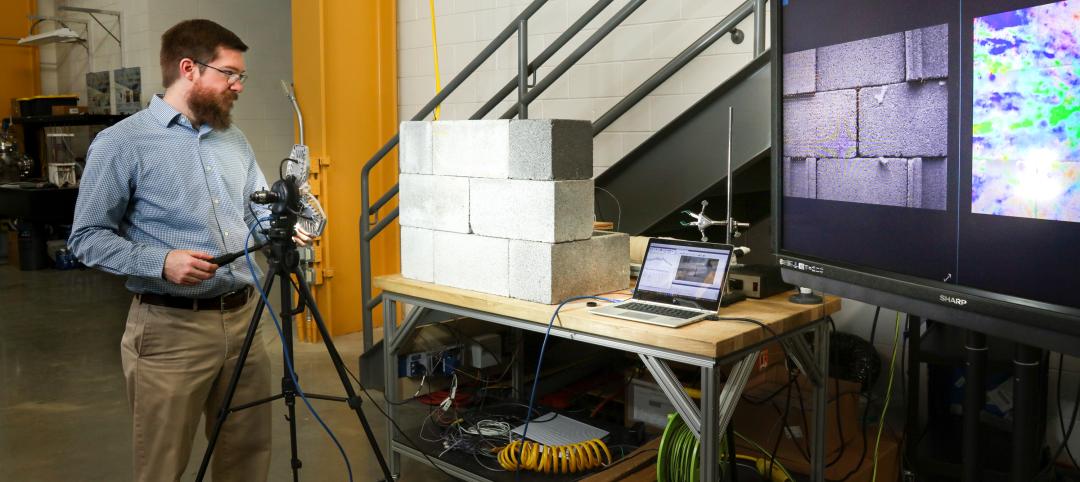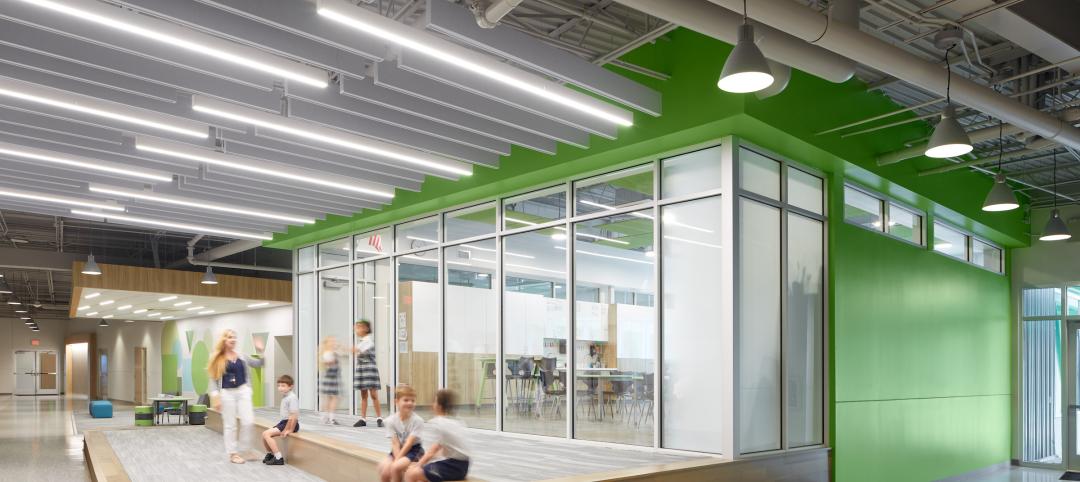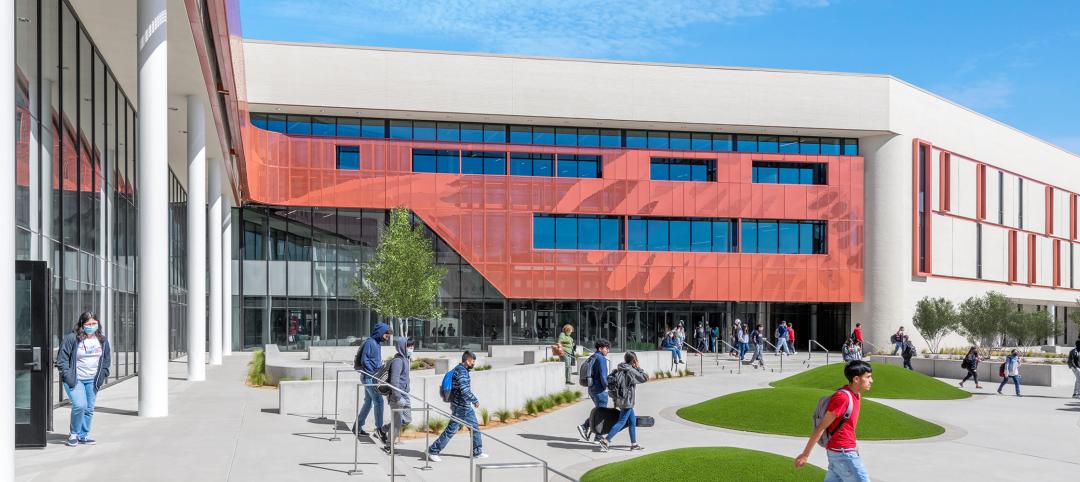|
In 2010, the AIA/NCARB Internship and Career Survey of emerging professionals took a snapshot of young designers during a time ofintense economic contraction, when they were often the first to suffer. But in the two years since, emerging professionals have begun experiencing a rebound, with higher employment levels, more young designers getting licensed, and any remaining unemployment becoming, in most cases, mercifully short. The 2012 Internship and Career Survey, commissioned jointly by the AIA and NCARB, and conducted by The Rickinson Group, contains a wealth of information on the experiences of emerging professionals as they go through IDP, take the ARE, become licensed, and obtain their first jobs. This survey has been completed five times since 2003, most recently inthe fourth quarter of 2012. Path to licensure: IDP and ARE The survey found that there has been little change in the length of time required to complete IDP over the last five years, with nearly two-thirds of respondents (62 percent) in 2012 reporting that it took them three to five years to complete. In addition, the majority of interns who have not yet completed IDP anticipate that it will take the same amount of time (55 percent). Twenty percent of those who haven’t yet started IDP think it will take them less than three years to complete; in contrast, only 13 of those who have already completed IDP reported that it took less than three years to complete. And just over half of respondents said that they were able to complete all 17 NCARB experience-area requirements at one firm, up 4 percentage points from 2010 and up 8 percentage points from 2005. Nearly 60 percent of survey respondents indicated that they have taken at least some divisions of the ARE, with the most commonly cited motivations for taking the exam being career enhancement (83 percent), personal goal fulfillment (80 percent), competitive advantage in the down economy (63 percent), and a slim majority citing competitive advantage in their firm. Forty percent of interns currently taking the ARE are taking it concurrently with IDP, an increase of 3 percentage points from 2010. In addition, female and younger interns are also more likely to be taking the two concurrently, as are interns on a traditional career path. Just over two-thirds of interns anticipate that it will take them one to four years to complete the ARE, comparable to the share of respondents who reported that it did indeed take that long. For the 41 percent of respondents who have not yet started or do not plan to ever take the ARE, the most commonly cited reasons for not doing so were a lack of time to prepare (56 percent) and cost (54 percent). Seven in 10 survey respondents reported that they intend to become licensed. This is down substantially from 2010, when 83 percent indicated that they planned to obtain licensure, because a larger share of interns are already licensed. (Twenty-five percent of interns were licensed in 2012, as compared to only 11 percent in 2010). The share of respondents who say that they do not intend to become licensed is unchanged from previous editions of the survey, at just 5 percent. Employment levels rising As in past versions of the survey, the vast majority of respondents in 2012 reported that they have already sought their first professional architecture position. And more than three quarters of respondents (78 percent) reported that they were currently engaged in professional architecture work, a notable 8 percent increase from 2010. In addition, just 6 percent reported that they were not currently employed, in contrast to 17 percent two years ago. Respondents also rated the many factors that went into selection of their place of employment, with the top three consisting of opportunities for growth (rated as important by 76 percent of respondents), location, and level of responsibility. Personal/family considerations were more important to respondents who were over 30, while location and reputation of the firm were more important to recently licensed architects. For respondents not currently working in a professional architecture position, the top two reasons were that they were laid off from their previous job (36 percent) and that the path to licensure is too long/difficult (35 percent). While just over half of respondents indicated that they have been laid off in the past, the duration of unemployment after the layoff has declined dramatically in the last two years. In 2010, only 52 percent were able to find a new job in a year or less; last year 64 percent reported that unemployment lasted 12 months or less. Just 14 percent said that they still haven’t found another job, less than half of the rate from two years ago. In addition, nearly seven in 10 respondents who left positions due to layoffs or other economic concerns think they are likely to remain in the architecture profession. Many firms offer interns support as they work to complete the ARE. The most common services include a firm-maintained library of study materials, firm payment of ARE fees, and paid time off to take the ARE. Approximately one-third of firms offer at least one of each. The vast majority of interns think that paid ARE fees are important forms of monetary support their firm can provide, along with a raise upon licensure, and paid professional organization dues. Overall, the most effective incentives to becoming registered are a salary increase, a bonus upon registration, and a bonus upon completion of the ARE. While 60 percent of respondents rated compensation as worse than they had anticipated, the majority has found that professional satisfaction with work, the type of work they’re doing, and hours worked are the same as or better than they had expected. This survey received 10,003 usable responses; 41 percent of respondents were women, 37 percent under age 30, and an additional 29 percent between ages 30–34. |
||
(http://www.aia.org/practicing/AIAB098254?mid=1298826&rid=14899235&cid=ITTestCampaign&sid=LyrisListManager&lid=aiarchitect-nonmembers)
Related Stories
Office Buildings | Nov 2, 2023
Amazon’s second headquarters completes its first buildings: a pair of 22-story towers
Amazon has completed construction of the first two buildings of its second headquarters, located in Arlington, Va. The all-electric structures, featuring low carbon concrete and mass timber, help further the company’s commitment to achieving net zero carbon emissions by 2040 and 100% renewable energy consumption by 2030. Designed by ZGF Architects, the two 22-story buildings are on track to become the largest LEED v4 Platinum buildings in the U.S.
Sustainability | Nov 1, 2023
Researchers create building air leakage detection system using a camera in real time
Researchers at the U.S. Department of Energy’s Oak Ridge National Laboratory have developed a system that uses a camera to detect air leakage from buildings in real time.
Adaptive Reuse | Nov 1, 2023
Biden Administration reveals plan to spur more office-to-residential conversions
The Biden Administration recently announced plans to encourage more office buildings to be converted to residential use. The plan includes using federal money to lend to developers for conversion projects and selling government property that is suitable for conversions.
Sustainability | Nov 1, 2023
Tool identifies financial incentives for decarbonizing heavy industry, transportation projects
Rocky Mountain Institute (RMI) has released a tool to identify financial incentives to help developers, industrial companies, and investors find financial incentives for heavy industry and transport projects.
Contractors | Nov 1, 2023
Nonresidential construction spending increases for the 16th straight month, in September 2023
National nonresidential construction spending increased 0.3% in September, according to an Associated Builders and Contractors analysis of data published today by the U.S. Census Bureau. On a seasonally adjusted annualized basis, nonresidential spending totaled $1.1 trillion.
Sponsored | MFPRO+ Course | Oct 30, 2023
For the Multifamily Sector, Product Innovations Boost Design and Construction Success
This course covers emerging trends in exterior design and products/systems selection in the low- and mid-rise market-rate and luxury multifamily rental market. Topics include facade design, cladding material trends, fenestration trends/innovations, indoor/outdoor connection, and rooftop spaces.
Office Buildings | Oct 30, 2023
Find Your 30: Creating a unique sense of place in the workplace while emphasizing brand identity
Finding Your 30 gives each office a sense of autonomy, and it allows for bigger and broader concepts that emphasize distinctive cultural, historic or other similar attributes.
Giants 400 | Oct 30, 2023
Top 170 K-12 School Architecture Firms for 2023
PBK Architects, Huckabee, DLR Group, VLK Architects, and Stantec top BD+C's ranking of the nation's largest K-12 school building architecture and architecture/engineering (AE) firms for 2023, as reported in Building Design+Construction's 2023 Giants 400 Report.
Giants 400 | Oct 30, 2023
Top 100 K-12 School Construction Firms for 2023
CORE Construction, Gilbane, Balfour Beatty, Skanska USA, and Adolfson & Peterson top BD+C's ranking of the nation's largest K-12 school building contractors and construction management (CM) firms for 2023, as reported in Building Design+Construction's 2023 Giants 400 Report.
Giants 400 | Oct 30, 2023
Top 80 K-12 School Engineering Firms for 2023
AECOM, CMTA, Jacobs, WSP, and IMEG head BD+C's ranking of the nation's largest K-12 school building engineering and engineering/architecture (EA) firms for 2023, as reported in Building Design+Construction's 2023 Giants 400 Report.



















